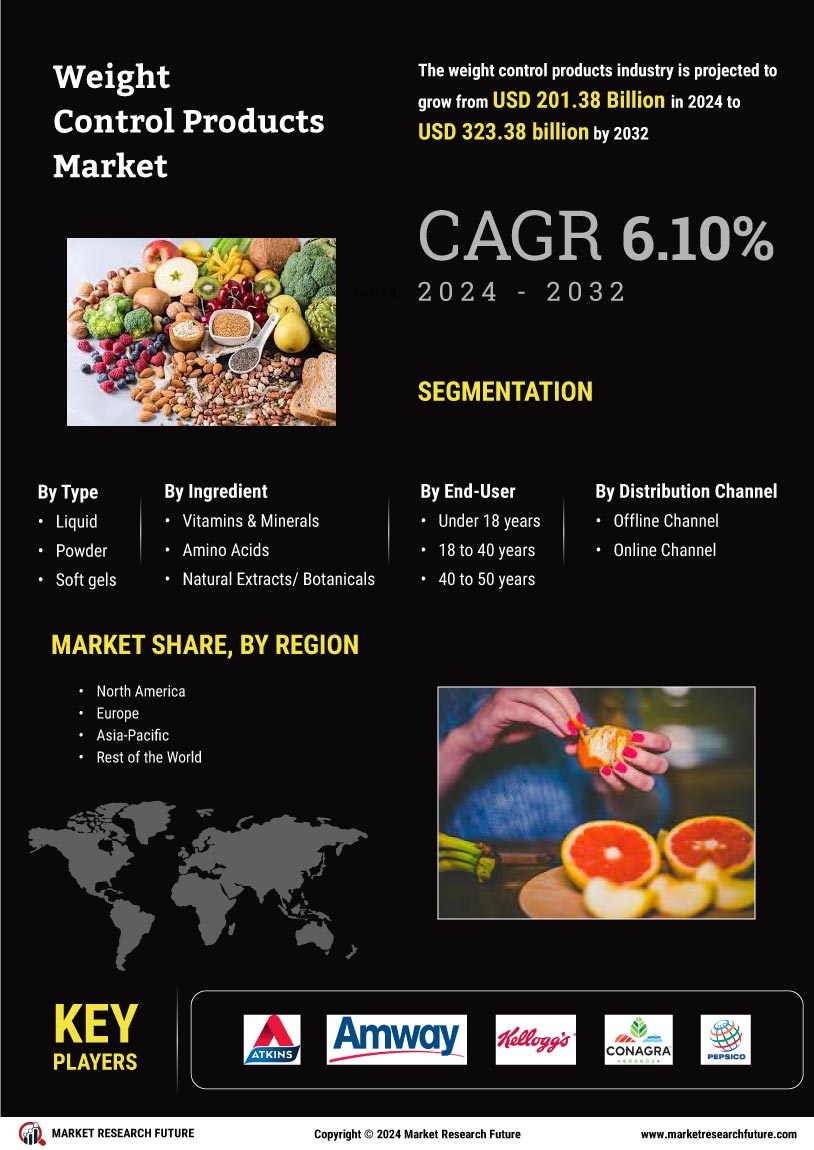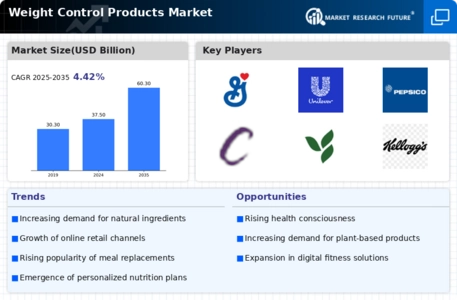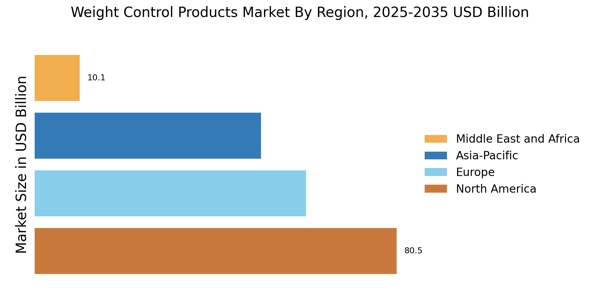Growing Health Awareness
An increasing awareness of health and wellness among consumers is significantly influencing the Weight Control Products Market. Individuals are becoming more informed about the impact of diet and exercise on overall health, leading to a greater focus on weight management. This shift is reflected in the rising sales of weight control products, which are projected to reach USD 250 billion by 2026. The Weight Control Products Market is adapting to this trend by developing products that align with consumer preferences for natural ingredients and sustainable practices. As health awareness continues to grow, the market is likely to see further innovations aimed at promoting healthier lifestyles.
Increasing Obesity Rates
The rising prevalence of obesity is a critical driver for the Weight Control Products Market. According to recent statistics, approximately 36% of adults are classified as obese, which has prompted a surge in demand for weight management solutions. This trend is likely to continue as health organizations emphasize the importance of maintaining a healthy weight to prevent chronic diseases. The Weight Control Products Market is responding to this demand by offering a diverse range of products, including meal replacements, dietary supplements, and fitness programs. As consumers become more health-conscious, the market is expected to expand further, with innovative products catering to various dietary preferences and lifestyles.
Focus on Personalized Nutrition
The trend towards personalized nutrition is becoming a prominent driver in the Weight Control Products Market. Consumers are increasingly seeking tailored solutions that cater to their unique dietary needs and preferences. This shift is prompting companies to develop customized meal plans, supplements, and weight management programs. Research indicates that personalized nutrition can lead to more effective weight loss outcomes, which is appealing to consumers. As the demand for individualized products grows, the Weight Control Products Market is expected to innovate and expand its offerings, providing consumers with more options that align with their specific health goals.
Rise of E-commerce and Online Retail
The expansion of e-commerce platforms is reshaping the distribution landscape of the Weight Control Products Market. Consumers are increasingly turning to online shopping for convenience and access to a wider range of products. This trend is particularly evident in the sales of dietary supplements and meal replacement products, which have seen significant growth through online channels. In fact, e-commerce sales in the weight control sector are projected to account for over 30% of total sales by 2025. As online retail continues to flourish, the Weight Control Products Market is likely to adapt its marketing strategies to leverage digital platforms and reach a broader audience.
Technological Advancements in Weight Management
The integration of technology into weight management solutions is transforming the Weight Control Products Market. Wearable devices, mobile applications, and online platforms are increasingly being utilized to track fitness and dietary habits. This technological evolution is enhancing consumer engagement and providing personalized weight management strategies. The market for fitness apps alone is expected to exceed USD 14 billion by 2025, indicating a robust interest in tech-driven solutions. As technology continues to evolve, the Weight Control Products Market is likely to witness the emergence of more sophisticated tools that facilitate effective weight control and promote healthier living.


















Leave a Comment